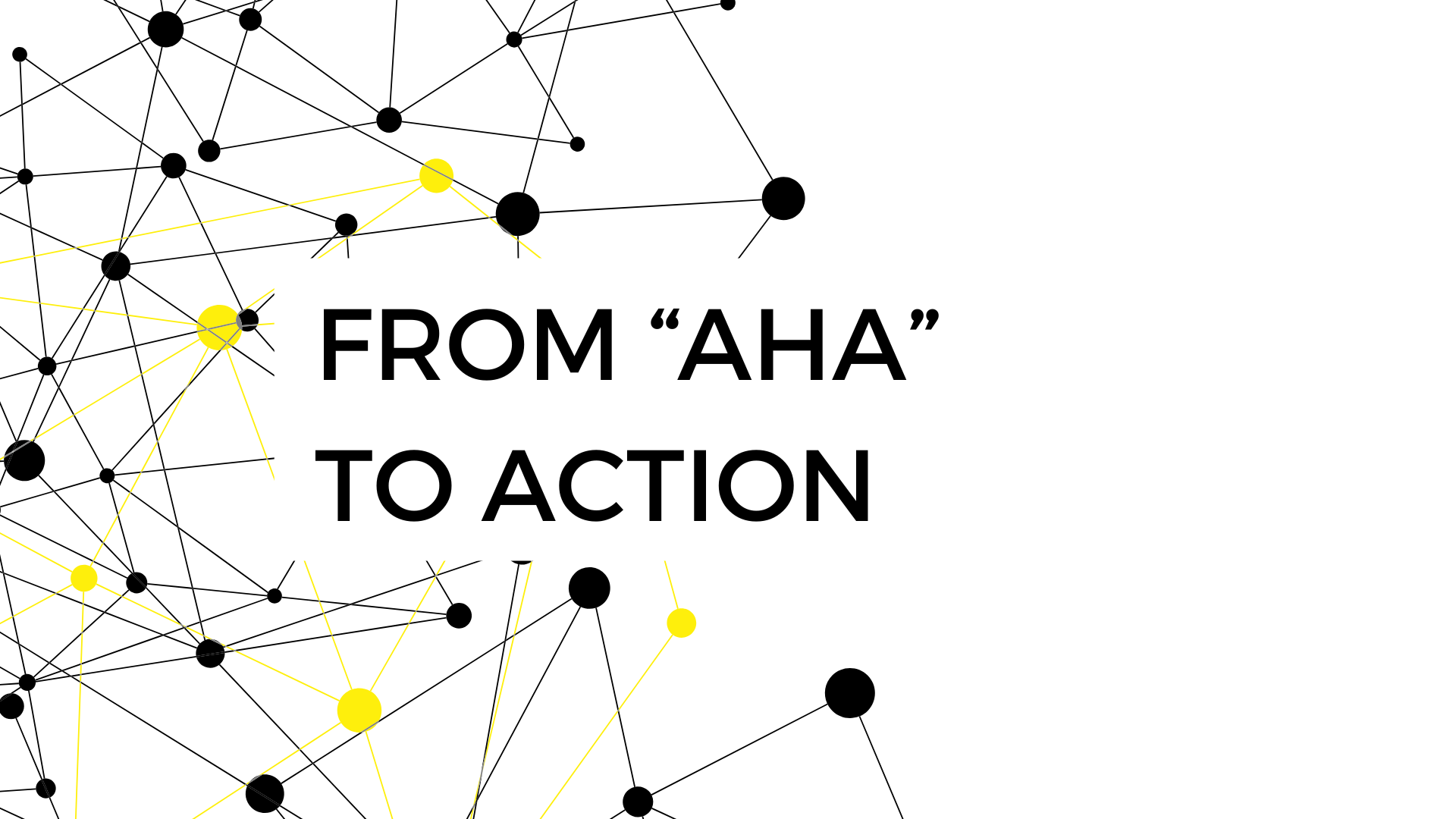From “Aha” to action

If you are fortunate enough to get valuable time with the relevant stakeholders and decision makers to tell them the story directly you don’t want to fill that time talking through slides. A meeting is the perfect opportunity to use your story as a catalyst for reflection, conversation, debate and action planning, but only if you leave a significant amount of time and space in the agenda to do so. My own golden rule for data storytelling is to only use 50% of the time with the audience to share the story outputs, leaving 50% of the time to engage with the audience.
Need inspiration for how to use the remaining 50% of the meeting?
Use one of the 4 tried and tested tactics shared below.
4 ways to spark a meaningful conversation to encourage ownership and action
1. Ask for early reactions
If short on time or when handling a big audience, you might not be able to have a detailed discussion, but that doesn’t mean you cannot capture early reflections on the data story. The best time to capture immediate reactions is after delivering the 2-minute story summary and before you go into too much detail. This is a good opportunity to gauge interest, acceptance, disagreement or scepticism relating to the story before you share more content. From these early reactions you can determine how best to proceed, what elements of the story need dialling up or explaining in more detail and what challenges or objections you might need to overcome to convince the audience of the recommendations and next steps.
If the meeting is in person, you can capture quick reflections on Post-it notes, or if meeting virtually, via chat function or whiteboard tools.
2. Give the audience a task
Giving your audience a task enables consciously listening throughout your delivery of the story, rather than forcing the audience to play a passive role. Active listening tasks also provide ready-made conversations starters that lend themselves to follow up exercises or further contemplation. A task could be as simple as asking them to listen out for the two or three points that are most relevant to them, or as complex as given them a specific role and asking to listen to the story through the lens of a customer segment or competitor. The key is to brief the audience on the task early, explaining the purpose and how you will use their output, to encourage them to stay on task during the presentation. Regular reinforcement of the task or providing tools to capture their thinking related to the task can also encourage participation and engagement with the story.
3. Ask the audience to ‘think back’
One of my favourite ways to get the audience involved and to spark a productive conversation is to deploy a ‘think back’ exercise towards the end of the presentation. For example, I might say “before my final slide containing next steps/ thought starters/calls to action, I am going to pause and ask you to co-create that page first, discussing in pairs and based on what you have heard in the story”. These ideas are then shared amongst the wider group to ensure different perspectives are heard and nuance captured. It allows the data storyteller to reinforce ideas, actions or plans, rather than prescribe them – leading to greater accountability amongst the audience. Hearing their key take-outs and ideas enables the co-creation of the action plan and provides a range of perspectives from different subject matter experts. This exercise also enables you to hear back what has stood out and resonated the most with the audience, allowing you to course correct and remind them of any key messages that haven’t stuck.
4. Ask a brilliant question
Finishing a presentation by asking “any questions?” is a sure-fire way to kill the experience. You need to have built time into your story delivery to capture and answer questions as you go along. If you want the audience to take accountability of what happens next to activate the insight you will be better off asking an interesting, challenging, or provocative question of the audience to encourage their thinking and to ignite a debate. Some example questions you can use to finish your story delivery and segue into a conversation are listed below:
To check understanding of the data story:
What has been a real AHA/surprise/what has sparked interest?
What is the best/worst thing that could happen now?
What's the one thing you want to change in your existing plans (based on what you just heard)?
What are the implications and risk of doing nothing?
To explore options highlighted in your data story:
What scenarios can we foresee if we put this into action?
What can we learn from similar experiences that we can utilise to make progress with this recommendation?
What's getting in the way of our progress?
If this was your own business, what would you do?
To help develop accountability of decisions and actions off the back of the data story:
What is within your control to do something about?
What will you do differently in the next couple of weeks / immediately?
What are the next steps towards achieving the end goal?
What are the options moving forward? Now? Next? Never?
What if competitor X would act on this first, what would you wish you had done after this meeting?
Ready to transform your data storytelling?
If you are looking for more hints and tips on data storytelling, click here to get a 20% discount on ‘Data Storytelling in Marketing: How to tell persuasive stories through data’ use code DSM20